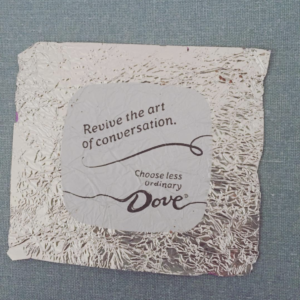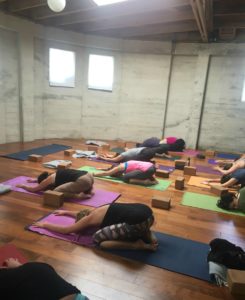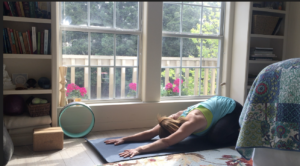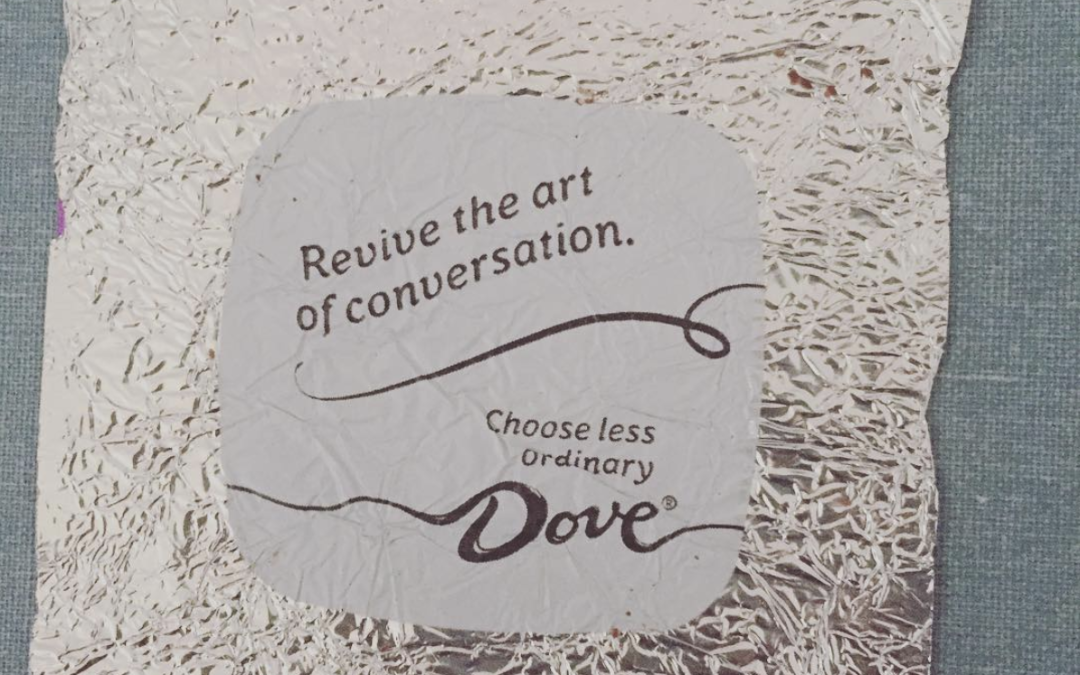Revive the Art of Conversation

Reviving the art of conversation through LISTENING
I love the idea that we keep returning and spiraling into conversation in our lives and with each other. We revisit, refine, and tune in more fully, if we show up with that intention.
And with great divides in our culture these days where we just can’t seem to be able to reach across the aisle, this is super important.
I came across a TED talk the other day, “10 ways to have a better conversion” with Celeste Headlee.
She quotes a high school teacher named Paul Barnwell who said, “I came to realize that conversational competence might be the single most overlooked skill we fail to teach. Kids spend hours each day engaging with ideas and each other through screens, but rarely do they have an opportunity to hone their interpersonal communication skills. It might sound like a funny question, but we have to ask ourselves: Is there any 21st-century skill more important than being able to sustain coherent, confident conversation?”
There’s a lot to this TED talk, but not surprisingly, the art of LISTENING is a key skill to develop.

Listening is something we do a lot of in yoga.
As a yoga student, you probably spend the majority of each class listening to your teacher’s instructions and cueing.
As a yoga teacher, I don’t demo much, if at all, during yoga classes and it forces me to be very clear with my words. My teachers encouraged me to use very clear, active language when guiding students into, within, and out of postures.
I can SEE the effect of clear language on the listening that students develop.
Why I don’t demo while teaching
One of my teachers, Schuyler Grant was BIG on this concept of not demoing and just using verbal cues. She believes that our culture doesn’t do enough listening and is maybe a bit too dependent upon visual stimulation. I agree, but I’ve shifted a little in terms of WHY I feel it’s not a good idea to demo while teaching.
It’s not so much that visual cues are “bad” (and sometimes they can be be very helpful. But I feel strongly now that when students LISTEN and try to take in information in their own bodies and make something happen, they are more able to have their own internal experience.
They have to listen.
They have to process.
They get deep and they pay attention in a way that doesn’t happen when I am up there, practicing and demoing how something “should” look (a whole other topic).
Sometimes, if something a little tricky is coming up and I really want the student to tune in, I’ll even say “Now, listen carefully.” It calls the attention to this skill of listening and the students become very aware of following the cues as best they can.
I can also tell when students who are quite experienced “check out” of yoga. All of a sudden, they are on the wrong foot or not quite following along, and then I know that my instructions aren’t landing or that they have drifted away of their own accord. It happens. We laugh a little and they get focused again. No biggee.
It’s TOUGH to listen for an hour and to stay present. To cultivate sustained attention. It’s one of the main skills we cultivate as yoga students.
During practice, we start to listen with the WHOLE BODY and not just the ears.
We take in information from all five senses, from our nervous system, from the rhythm of the breath, and from the pace of our thoughts. One of my favorite teachers, Meaghan Curie, talks about a whole body listening experience, like when you are having a really good, deep conversation with a friend. Where you lean forward and you use your hands and your body language to communicate. There is an art to this whole body listening.
The art of listening is heightened in private yoga sessions.
I work with several private students in 1×1 sessions, and this skill of listening is one of the most profound things I’ve witnessed with my private students. Without the group of students around them to distract their attention, these students (several of them brand new to yoga) have developed a skill to listen that is more fully integrated than yogis I know who have been practicing for years.
In a private session, it’s just you and the teacher, and listening is a BIG part of the session. For the student AND for me.
I’ve found with my newer private students, I have to work really hard to find words that will help them know what I mean by my cues. As a teacher, I’ve gotten into habits of the way I describe things, and in group classes, usually students figure these out quickly because they are regulars in my class and they have become accustomed to how I say things. But in a private, I know RIGHT AWAY if my instructions are not landing, so I have to try to find another way to say what I mean. Sometimes I do a short demo if needed, but it’s a small challenge to try to figure out “how can I communicate with this person in front of me?”
It’s so interesting. It exposes how important communication and conversation is, and how when we THINK we are being clear, the other person has a totally different impression of what we mean when we say something.
And it’s not just one sided. I, as the teacher, am also listening back.
We have a conversation, me and the student. The student, in a private setting, gets to ask all the questions they want of me, and I do my best to answer them.
We explore and inquire together, how the practice can best support (and challenge) the student.
And I ask my students how things feel, where sensation is. Because I cannot know what their experience is unless I ask. I watch breath patterns to see where the energy is flowing, and so am listening and watching for ways to enhance that flow.
We are listening to each other at a deep level.
It takes effort, this listening. It cultivates awareness and focus. It asks us to dig past the basic “following of instructions” and to get curious. The student becomes more curious about their own body, breath, tendencies and patterns, and I get curious about how to best serve that student.
It’s harder in a group class, but I can still strive to set up this environment for a two-way conversation, among the group. I am just facilitating a conversation. Because the group of students is also communicating with each other. Which I think is pretty cool.
Home practice is also an opportunity to practice listening.
At home, it’s just you and your mat.
Or you and your online yoga class.
Practicing at home with videos to guide is another chance to go within and listen carefully. You’ll find that you barely look up at the screen, if the verbal cues are clear. Try out this 16-min Quick Morning Practice (which is a free sample in my Grounded Flow class library) and see how much you can tune in, listen, feel your body, and experience your practice.

Whether you practice completely on your own, or along with an online yoga class, I encourage you to LISTEN carefully and dig in. See what is there. Because once you learn to listen carefully to YOURSELF, then we can more easily take that listening into our relationships with others.
If we can cultivate this skill in our yoga practice, maybe we can start to take it off the mat.
As we approach the holidays and family get togethers, there is a chance that many of us may encounter difficult conversations with family members on topics where we don’t see eye to eye. How can we navigate this, using the power of listening and curiosity that we’ve honed in our yoga practice?
My mother told me about a framework called “Living Room Conversations.” Check out their website, where there are tons of resources for how to have those difficult conversations with those on the other side of the fence. There is a list of topics, rules for a structured conversation, and more.

We have to be willing to go to the divide and have a conversation. We have the opportunity to re-weave the fabric of our communities with the belief that our differences can be a strength.
Linked on the “Living Room Conversations website is another great TED talk with Joan Blades and John Gable. They talk about how to “Free yourself from filter bubbles” and briefly go through the Living Room Conversations approach.
This approach involves inviting a friend with a differing viewpoint on a topic, and then inviting 2 friends each on each viewpoint, so there is a group of 6 people for a structured conversation.
You agree on some basic ground rules (think kindergarten), and there is some reflection and maybe some next steps.
This is a “deep listening process,” says Blades.
Print out the Home for the Holidays Conversation Guide. Perhaps it will help you get through that tough dinner, holiday party, or awkward moment and reach across the divide.
Solving the big and small issues of our time will not happen in one conversation. Back to the origins of this word again, “con” means “with” and “versa” means “to turn.” So we will have to keep staying WITH each other, turning things around this way and that, and try to find common ground.
Headlee says in her TED talk, “It comes down to be interested in other people. Be prepared to be amazed.”


 Empowering women who are 40+ to install movement habits that are nourishing, strengthening, and approachable for a truly calm and connected life.
Empowering women who are 40+ to install movement habits that are nourishing, strengthening, and approachable for a truly calm and connected life.